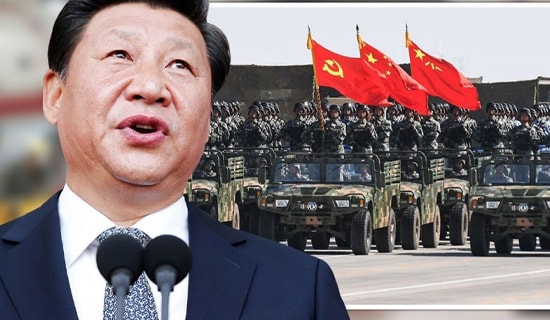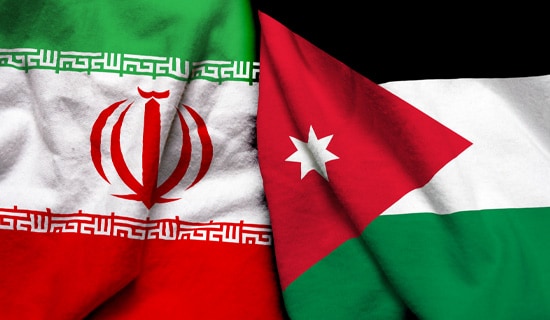As part of the efforts to end the deadly war that has been raging in Syria for over three years, UN Special Envoy to Syria Staffan de Mistura has presented a plan aimed at preparing the ground for a political solution to the Syria crisis. The plan calls for "freezing" the fighting and restoring calm in specific areas. Aleppo has been chosen as the first area in which the plan will be tried, due to the dire humanitarian situation there and the advance of Islamic State (ISIS) forces towards it. If the attempt there is successful, the plan will be expanded to further zones, in a bid to create an atmosphere conducive to negotiations between the regime and the opposition.
During his visit to Syria in November 8-11, 2014, de Mistura presented his plan to the Syrian regime and received President Assad's approval to proceed. Assad's approval possibly stems from the resemblance of this plan to the "National Reconciliation" plan that the regime has been promoting for over a year, which likewise involves local ceasefires and "reconciliation" in specific areas. However, the regime has managed to achieve these ceasefires only in areas where it defeated the opposition fighters and the populace by besieging and starving them, so they are basically agreements of surrender.[1] During his visit to Syria, regime representatives accompanied de Mistura on a tour of Homs, where the regime has managed to achieve what it calls "national reconciliation" with local opposition forces, in order to show the envoy how the regime means to implement his plan.
De Mistura's visit to Homs, and his plan for freezing the fighting - which, as stated, largely corresponds to the regime's own plan - met with harsh criticism from elements in Syria's armed and political opposition, who fear that the plan will perpetuate the status quo and the Assad regime.
A prominent example of this criticism is an article by Syrian journalist Ghazi Dahman, who writes in the Saudi London-based daily Al-Hayat. In an article titled "The Plan To Freeze Change In Syria," he wrote that de Mistura's visit to Homs was like a UN envoy visiting Auschwitz to witness the successful implementation of the Nazis' Final Solution. He said further that the envoy's plan for suspending the fighting in specific areas was reminiscent of the UN plan for "safe areas" in Bosnia and Herzegovina in the early 1990s, which was a resounding failure due to the UN's impotence and which led to massacres, some of which have been recognized as acts of genocide. Dahman added that de Mistura's plan dovetails with other developments in the regional and international arenas, including the nuclear negotiations between Iran and the U.S.; the U.S. decision to cut funding for the Commission for International Justice and Accountability, which is investigating war crimes in Syria; Oman's plan to reopen its embassy in Damascus, and Russia's efforts to convene an intra-Syrian dialogue conference in Moscow. By this he implied that there is an American-Iranian deal for restoring Assad's legitimacy.
The following are excerpts from Dahman's article:[2]
De Mistura's Visit To Homs - Like A Visit By A UN Envoy To Auschwitz
"The international UN Envoy de Mistura's visit to ruined Homs can be likened only to [a scene in which] Hitler's ministers take a UN envoy to visit the Auschwitz [concentration] camps, in order to show him the successful operations of extermination taking place there. The only meaning of this visit... is that the UN approves of this policy [of local ceasefires], whose price is some one million people displaced and tens of thousands missing or dead under the ruins, [as a result of] barrel bomb attacks and starvation, as well as a significant change in the cities' demographic makeup - [crimes] that are documented in the UN [records]. Nobody knows whether this man [de Mistura] asked his hosts where the people who once lived in those neighborhoods were - or [perhaps he thinks] that the [regime] engaged in reconciliation with the ruined walls.
"Perhaps it is natural that de Mistura senses no conflict of interests between his role and status and this [visit to Homs], because it corresponds with the UN's [general] conduct as the representative of the international community in Syria, [conduct] which echoes what it did in Bosnia and Herzegovina, where safe areas were established to protect certain Bosnian towns from Serbian invasion. The city of Srebrenica was included in one of these safe areas. The UN demilitarized these areas [by banning] all weapons of defense, and as a result the UN forces [themselves] could not oppose the Serbs, who arrested the UN observers, invaded the Bosnian areas and carried out many massacres, the most horrific of which was the Srebrenica massacre, in which 8,000 people were killed. Is there a plan to [repeat] this experience in Syria?
SUPPORT OUR WORK


De Mistura (second from left) visiting Homs (SANA, Syria, November 10, 2014)
The De Mistura Plan Continues The Plan Devised By Russia And Implemented By Assad Under Iranian Supervision
"Some think that de Mistura's proposal to freeze the fighting is not new, but continues the ceasefires implemented by the Assad regime in many parts of Syria - [according to a plan] devised by Russia and directly supervised by Iran, as happened in Homs itself. The danger lies in the fact that the international community has finally accepted Russia's and Iran's approach to resolving the crisis by [treating it] as a rebellion in some specific areas that requires a local solution. This is done by meeting some of the basic needs [of the population] in ruined areas, and coming to an arrangement with some wanted [individuals] there, [in hope of] ending the revolution as a bid for profound change, and reviving the regime while supplying it with everything it needs to survive."
"Moreover, examining this issue from a broader perspective of the changes occurring in the region, one finds a clear connection between [this plan] and some regional matters, such as the nuclear negotiations between the U.S. and Iran, Oman's intention to reopen its embassy in Damascus, and the [recent] visit of some [Syrian] oppositionists to Moscow.[3] Connecting the dots allows an accurate reading of the overall picture. The first thing that emerges is that regional matters, which the U.S. claimed would not be included in its nuclear negotiations with Iran, actually top the list of understandings that are forming between the two sides. [It also emerges that] the Omani mediator is willing, after addressing the last outstanding points of the nuclear [agreement], to address a new regional dossier, namely the Syrian dossier, and that some of the parties in the negotiations are willing to declare a deal [for resolving the Syria crisis] at the Moscow One [conference].[4]
The De Mistura Plan Means Restoring Assad's Legitimacy
"Theoretically, the political meaning of this policy is restoring Bashar Al-Assad's legitimacy, as a prelude to including him in counter-terrorism efforts. The assumption is that the understandings proposed by de Mistura will encompass most of the local forces, so that the regime will be able to claim that most of these forces have signed a ceasefire [with it], and those that have not are extremist elements like Jabhat Al-Nusra or ISIS-affiliates, i.e., foreign forces...
"In practice, this policy can be included in a broad framework of goals and strategies. [De Mistura's] plan legitimizes the war lords by [endorsing] the international interpretation that regards the Syria crisis as a civil war and therefore places blame equally on both sides. It is no coincidence that the U.S. State Department cut funding to the commission investigating war crimes in Syria. [De Mistura's proposal] is also the beginning of [a plan for the] 'peaceful' fragmentation of Syria..."
Endnotes:
[1] Moreover, these ceasefires enable the regime to divert forces to more pressing war zones, while also deepening the conflicts that already exist within the opposition between supporters and opponents of these ceasefires, as well as between local fighters and the opposition's general leadership. See MEMRI Inquiry & Analysis No. 1069, "Syria Regime's Tactic Against Opponents: 'Surrender Or Starve,'" February 13, 2014.
[2] Al-Hayat (London), November 24, 2014.
[3] In early November, a delegation of Syrian oppositionists, headed by former National Coalition leader Mu'adh Al-Khatib, visited Russia and discussed with Russian officials ways to resolve the Syrian crisis.
[4] Russia has recently announced its intention to convene a conference for dialogue between the Syrian regime and opposition towards ending the war. According to reports, the conference is to focus on the danger posed by Islamist terror and on establishing a national unity government. The Lebanese daily Al-Akhbar, which is close to the Syrian regime, reported that this conference, called "Moscow One", will endorse a different framework of negotiations than the Geneva international conferences of 2012 and 2013, and will focus on fighting terror rather than on replacing the regime. Al-Akhbar (Lebanon), November 10, 2014. Furthermore, Russian Foreign Minister Sergei Lavrov said recently that the U.S. has agreed to withdraw its recognition of the National Coalition for Syrian Revolution and Opposition Forces as the sole legitimate representative of the Syrian opposition, and to meet Russia's demand - actually the demand of the Syrian regime - that the dialogue include other opposition elements from inside Syria. Sputniknews.com, November 8, 2014.




